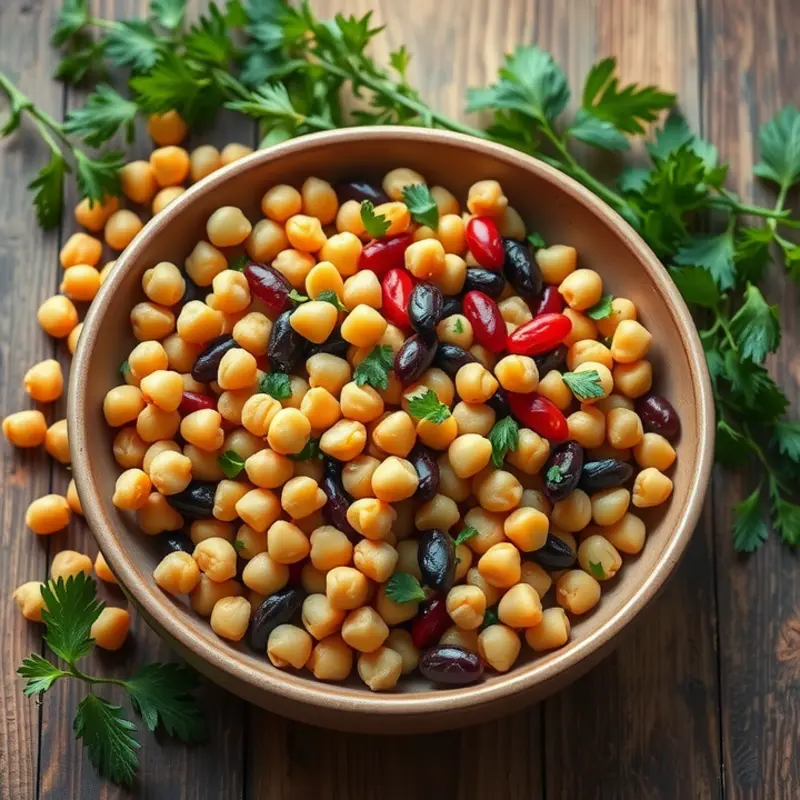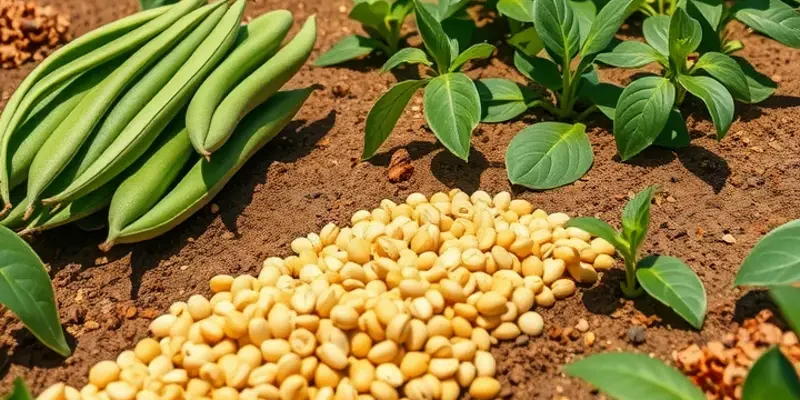Cooking legumes can seem daunting, but with the right techniques, anyone can master these nutritious ingredients. From lentils to chickpeas, legumes are versatile, filling, and packed with protein. Whether you’re a beginner or an experienced home cook, understanding how to prepare legumes properly can elevate your dishes and expand your culinary skills. Let’s explore the essential steps to cook legumes perfectly every time.
The Essential Soaking and Cooking Process

Mastering legumes truly begins with understanding the vital steps of soaking and cooking. These processes ensure that your legumes have the perfect texture and flavor. While some legumes can be cooked without soaking, most benefit from this preliminary step. Soaking helps reduce cooking time and improves digestibility by breaking down the complex sugars responsible for gas production.
Soaking Methods
There are generally three soaking methods to consider: traditional overnight soaking, quick soaking, and no soaking. For overnight soaking, rinse your legumes and place them in a bowl with three times as much water. Cover and leave them at room temperature for 8-12 hours. Quick soaking involves rinsing the legumes, boiling them for two minutes, then letting them rest in hot water for an hour. Some small varieties, like lentils, do not require soaking and can be cooked directly.
Types of Legumes and Their Characteristics
Different legumes have specific soaking and cooking needs. For example, chickpeas (garbanzo beans) are larger and denser, requiring at least 8 hours of soaking. Kidney beans, black beans, and pinto beans also benefit from overnight soaking. Lentils and split peas, on the other hand, are softer and can be cooked without soaking, though a brief chilling soak can speed up cooking.
Cooking Times
Cooking times vary greatly across legume varieties. Chickpeas need about 60-90 minutes, while lentils can be ready in 20-30 minutes. Black beans require approximately 60-75 minutes, whereas split peas need around 30-40 minutes. Always monitor the texture as legumes can easily overcook. Testing for tenderness is crucial — they should be soft yet firm enough to hold their shape.
Guidance on Proper Technique
Using the right amount of water is key, much like in any eco-smart kitchen storage. Start with a ratio of three parts water to one part soaked legumes. Bring the water to a boil, then reduce it to a simmer and cover. It’s essential to avoid adding salt at the beginning, as it can toughen the legumes. Wait until the last 10 minutes of cooking to season them.
Incorporating these fundamental techniques in your culinary arsenal ensures that you can cook legumes confidently. Adjust cooking methods based on the legume type to ensure each batch is optimally delicious and nutritious. These steps not only elevate your culinary skills but also bring a world of flavor to your table with each perfectly cooked legume.
Flavoring and Pairing Legumes in Your Cooking

Legumes offer a versatile canvas for culinary creativity, and learning how to flavor and pair them effectively can elevate your meals. Start by exploring the robust palette of spices and herbs available. Cumin and coriander are classic spices that pair beautifully with lentils, adding earthiness and warmth. For a more aromatic touch, consider ginger and turmeric; these not only infuse chickpeas with fresh flavors but also bring vibrant color.
When integrating legumes into dishes, choosing the right herbs can make a significant difference. For instance, thyme complements the nuttiness of white beans, especially in soups and stews. Basil and oregano work well with black beans, especially in Mediterranean-inspired salads or sauces.
To enhance the overall taste of legumes, don’t shy away from ingredient combinations that build complexity. Aromatics such as garlic and onion can form the base flavor profile of most legume dishes. For a sweet and spicy balance, include elements like cinnamon in a chili with kidney beans to achieve depth of flavor.
When crafting salads with legumes, texture and contrast are key. Combine chickpeas with creamy avocado and crunchy bell peppers. Add a citrusy dressing for a zesty finish. For lentil salads, a simple vinaigrette of olive oil, lemon, and Dijon mustard enhances their natural earthiness, paired with feta cheese for creaminess and pepitas for crunch.
In soups and stews, layering flavors is essential. Start with sautéing vegetables before adding your choice of soaked legumes. This step ensures the legumes absorb the rich taste of the base ingredients. Use a bouquet garni, featuring herbs like parsley and bay leaf, to subtly infuse the broth during cooking.
For those looking to experiment or follow specific dietary practices, easy plant-based eating can offer additional inspiration and guidelines, ensuring meals are both nutritious and flavorful without animal products.
Finally, don’t forget the power of toppings and garnishes. A sprinkle of fresh herbs, like cilantro or mint, or a drizzle of high-quality olive oil just before serving adds finesse and an extra flavor burst to any legume dish. Integrating these tips will not only enhance your culinary prowess but transform simple legume dishes into standout meals.
Final words
Cooking legumes is not only a beneficial skill but also an enjoyable experience that opens up a world of flavors. By soaking and cooking them correctly and embracing various spices and combinations, you can create nutritious and hearty meals. Remember, practice makes perfect! Experiment with different legumes and pairings, and don’t hesitate to dive into new recipes. With time and confidence, you’ll transform your culinary repertoire, impressing family and friends with delicious legume dishes.







